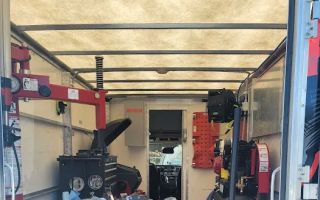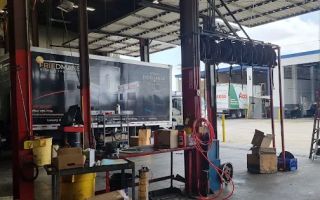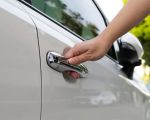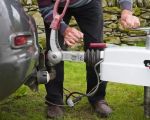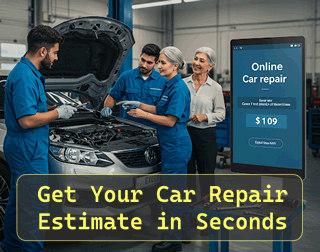Tips for Staying Safe During a Roadside Emergency
- Understanding Roadside Emergencies
- How to Prepare for Roadside Emergencies
- Steps to Take During a Roadside Emergency
- What to Do After the Roadside Emergency
- When to Call for Towing Assistance
- A Real-Life Roadside Emergency: Lessons Learned
Understanding Roadside Emergencies
Roadside emergencies can happen at any time, often when we least expect them. Whether it’s a flat tire, engine trouble, or running out of gas, the key to staying safe during these situations is being prepared. A roadside emergency can be stressful, especially if you're on a busy highway or in an unfamiliar area. However, with the right knowledge and precautions, you can manage these situations more effectively and safely.
Roadside emergencies are common, and they often involve either mechanical failure, accidents, or getting stuck due to weather or terrain conditions. Understanding the risks and being ready with an emergency plan is crucial. When you're prepared, you reduce not only the stress of the situation but also the risk of further complications or danger.
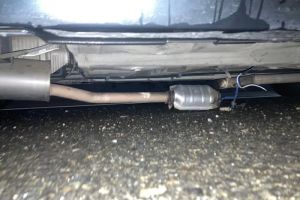
California Roadside Service
1426 S Allec St, Anaheim, CA 92805, USA
How to Prepare for Roadside Emergencies
The best way to stay safe during a roadside emergency is to be prepared long before one occurs. Taking a few simple steps before you hit the road can make all the difference when things go wrong:
- Keep an Emergency Kit in Your Car: An emergency kit should include basic tools, such as a jack, spare tire, jumper cables, flashlight, and a first-aid kit. Additionally, keep extra water, snacks, and a blanket, especially for longer trips or in colder climates.
- Check Your Car Regularly: Preventive maintenance can prevent many roadside emergencies. Regularly check tire pressure, fluid levels, and brakes. Having your car serviced regularly can help you spot potential issues before they escalate into major problems on the road.
- Have a Roadside Assistance Plan: Many insurance companies offer roadside assistance services. These plans can be invaluable during an emergency, providing access to towing, battery jump-starts, and other services when you need them most. Be sure you have your roadside assistance contact information readily available.
- Know Your Route: If you are traveling in unfamiliar areas, plan your route in advance. Knowing where gas stations, rest stops, and repair shops are located can be especially useful if you encounter a problem along the way.
Steps to Take During a Roadside Emergency
If you find yourself in a roadside emergency, staying calm is the first step. Follow these tips to ensure you handle the situation as safely as possible:
- Pull Over Safely: If you experience any mechanical issue, your first priority should be to pull over safely. Find a well-lit area away from traffic, if possible. Turn on your hazard lights to alert other drivers of your presence.
- Stay Inside Your Vehicle: If you are stranded on the side of the road, especially on a busy highway, it’s best to stay inside your car until help arrives. Getting out of your vehicle can expose you to dangerous traffic or other hazards.
- Call for Help: If you are unable to fix the problem yourself, call for roadside assistance or a towing service. If you don’t have a service plan, call a trusted towing company like Rescue & Towing for assistance. Be sure to provide your exact location, including any road signs or mile markers.
- Assess the Situation: If the issue is something you can fix, such as a flat tire, take care of it as safely as possible. Always use a reflective vest or triangles to signal to other drivers that you are on the side of the road.
What to Do After the Roadside Emergency
Once the emergency is resolved, there are a few things to consider to ensure your safety and avoid future problems:
- Evaluate Your Car’s Condition: After getting your vehicle back on the road, assess its condition. If you’re unsure about the repairs made, it’s wise to have your car inspected by a mechanic as soon as possible to avoid further complications.
- Review Your Roadside Assistance Coverage: After the emergency, review your roadside assistance coverage. Make sure it meets your needs, especially if you experienced any difficulties during the emergency response.
- Take Note for Future Preparation: Reflect on what happened and what could have been done differently. Use this experience to further enhance your emergency preparedness, whether it’s updating your emergency kit or learning how to address common car issues yourself.
When to Call for Towing Assistance
Knowing when to call a towing service is crucial. Here are some scenarios where you should not hesitate to reach out for professional help:
- When Your Car is Inoperable: If your car is unable to start or move, calling a towing service is the safest and most efficient solution. Attempting to drive a broken-down vehicle can lead to further damage or pose a safety risk.
- After an Accident: If you are involved in a collision and your vehicle cannot be safely driven, a towing service can transport it to an auto body shop for repairs.
- When You’re Stranded in a Dangerous Location: If you find yourself stuck in an unsafe area, such as on the side of a busy highway or in a remote location with no immediate assistance available, it’s important to call for help immediately. A towing service can ensure you are transported to a safer location.
A Real-Life Roadside Emergency: Lessons Learned
Take the case of Lisa, who was driving on a remote highway in the middle of a rainstorm. Her tire blew out, and she was stuck in an area with no cell phone signal. While waiting for assistance, she learned the importance of having a roadside emergency kit. Fortunately, after she managed to get a weak signal and called for a towing service, help arrived quickly. Her story underscores the importance of preparation, staying calm, and knowing when to call for help.
Lisa’s experience also reinforced the value of roadside assistance coverage. With the right plan in place, she could have avoided waiting for so long in the storm, knowing that help was already on the way. Roadside emergencies can be stressful, but proper preparation and the right tools can make all the difference in ensuring your safety and peace of mind.
If you want to ensure you're fully prepared for any roadside emergency, check out Rescue & Towing for professional services and roadside assistance plans. Stay safe and be ready for anything on the road!




